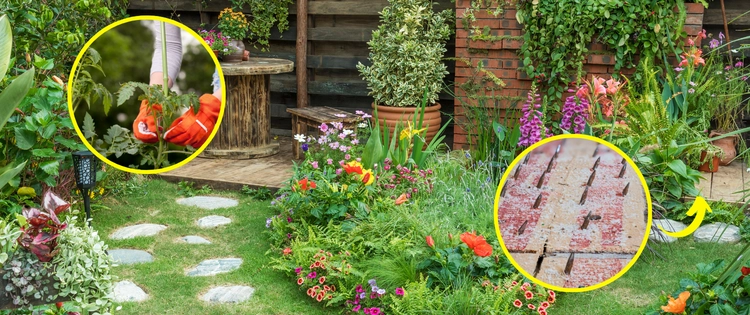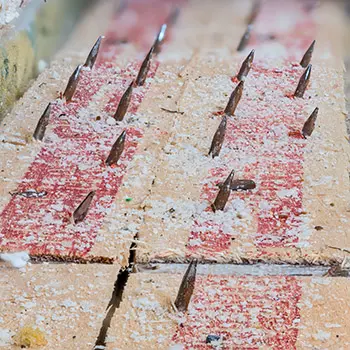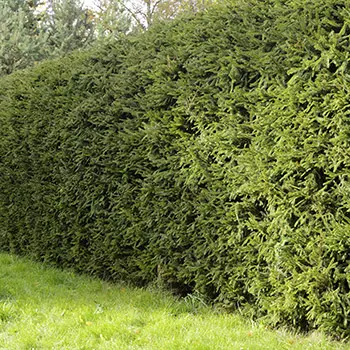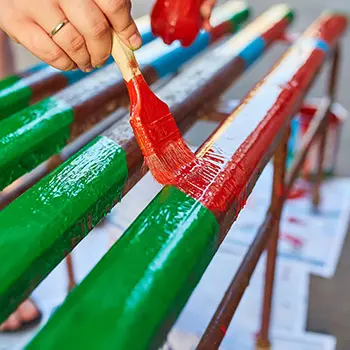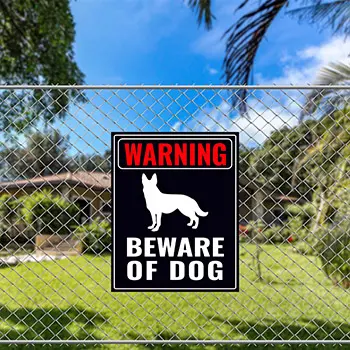We thought we’d left behind the threat of garden theft when relocating to our suburban homestead, but no. About a week in, a drunk intruder hopped over our fence but fled upon noticing our presence.
You may have experienced a similar situation or worse due to the crime surge. However, like me, you detest the idea of installing security surveillance devices that could make your garden feel more like a prison yard.
Fortunately, there are some ingenious ways to looter-proof your garden. Today, I’ll share six methods that we have been using successfully.
Sacrifice One Plant To Save The Others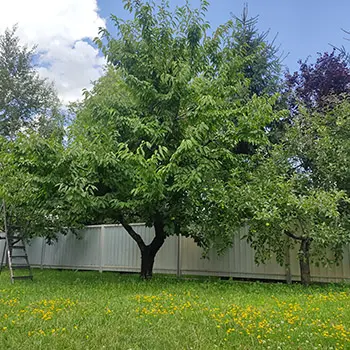
I still remember the thrill of stealing apples from a nearby farm as a boy. Yes, it was naughty, but kids will be kids! There was a legend that the farmer had a shotgun and would use it on thieving boys, but the danger just made it more exciting!
We would dare each other to grab an apple or two and would be thrilled if we got away with it. But we never went beyond the trees hanging over the fence by the road, nor did we ever actually see the farmer with his shotgun.
The rest of his orchard was perfectly safe from misbehaving children and I suspect he knew that.
If you plant a sacrificial apple, pear, or other fruit tree in an easily accessible spot so budding looters can satisfy their need for a thrill, and keep the main trees in a more complex, riskier area to reach, they will likely be left alone.
Even so, I suggest harvesting your fruit quickly to not tempt potential looters.
Tie Down Your Plants
Tie the plants down with chains or cables, or permanently fix the pots to the ground or terrace. Determined thieves may indeed bring tools to cut the chains or pull the plant out of the pot, but this is only likely if they specifically want that particular plant you have.
From my experience, most plant thieves are not professional criminals but act on impulse when they see an attractive plant. They probably won’t take something that isn’t easy to remove and requires advanced planning.
Related: DIY Survival Garden
Nail Carpet Tack Strips To Your Garden Fence
Carpet tack strips are wooden strips with sharp points sticking out, normally used to secure carpets in place. However, they can be cleverly re-purposed to create a very unpleasant surprise for anyone trying to climb over your fence. If you have a wooden fence, carefully inspect where trespassers are likely to get hand/foot holds to climb over.
On the outside of the fence at those grip points, securely nail or screw the carpet tack strips in place. The sharp points will make it extremely difficult and painful for anyone attempting to gain leverage.
On the other hand, metal fences require a slightly different application. From the inside of your yard, zip-tie or secure the carpet tack strips tightly to the fence rails or bars where someone might try grabbing on from the outside. Their hands will get a nasty surprise if they attempt to climb your fence. Make sure you check local regulations and laws if this is legal first.
Use Gravel As An Alert System
Gravel is an excellent choice for outdoor spaces because it gives a neat and stylish appearance, even in simple areas. One of the best things about gravel is the distinct crunching sound it makes when someone walks on it.
This noise can let you know when guests have arrived at your front door. More importantly, it can also warn you about any unexpected visitors, whether during the day or night. The crunching of gravel underfoot serves as an audible alert system, immediately catching your attention.
This can be incredibly useful for home security purposes, as it makes it difficult for potential intruders to approach your property unnoticed. The sound of gravel being stepped on can signal when someone is nearby, giving you time to investigate or take necessary precautions.
Related: How To Install A Trip Wire Alarm On Your Property
Using Plants To Create Protective Barriers
Plants can act as natural barriers to keep unwanted people out of your garden. Growing certain types of plants around your property is a great way to improve security while also making your outdoor space look beautiful.
Thick hedges with tangled branches make very strong barriers that are difficult to get through. Planting these around the edges of your garden can prevent trespassers from entering.
Prickly plants with thorns or spines are also excellent for deterring intruders when planted near fences, walls, or windows. Their sharp points make it unpleasant or impossible for someone to try climbing over. Yet these types of spiky plants can still look lovely when incorporated into your garden’s design.
Grow Plants In Heavy Pots
My clivia plant was almost in this category, but unfortunately, it was just light enough to be lifted and taken away. If a pot requires two people to move it, chances are very high that it will remain safe from theft.
Mark Your Belongings
If your furniture and valuable items are clearly labeled as yours, thieves will be less interested in stealing them. Use paint, carving, or etching to put your house number and postal code on things like outdoor furniture or garden equipment.
This makes the items easier to identify and less appealing targets for criminals. If the items do get stolen, the labeling increases the chances of getting them back.
Another smart idea is to take photographs of your expensive belongings and write down their serial numbers. Having this documentation will be very helpful if you ever need to make an insurance claim for stolen possessions. The serial numbers prove the items belonged to you.
Add Trellis On Top Of Your Fence
You don’t need to put spikes or barbed wire on top of your fence to stop thieves (though you can if you want to). A simple trellis added to the top will make your fence taller without making your garden feel closed in. This gives your garden more privacy if others can look into it, while still letting light through.
You can make this new security feature look nice by growing roses or clematis vines on the trellis. Or personalize your fence by hanging baskets, bird feeders, or a vertical garden for herbs from the trellis.
Put Up Warning Signs
There’s the classic “Beware of Dog” sign, which you can use even if you don’t have a dog. And a “Caution Poison Ivy” sign would probably make many plant thieves think twice before trying to steal your plants!
However, my favorite remains “Plant Thieves Will Be Composted.” (Sometimes just reminding potential thieves that what they want to do is against the law is enough to stop them in their tracks.)
How A Looter Looks At Your Garden
When trying to protect your garden, it’s important to think like a looter. It can be hard to make your garden secure and also look nice, but there are ways to do both.
Your plan will depend on the layout of your garden, but you should always make security the top priority. Take steps to fix any parts of your garden that would make it easy for a thief to get in. We suggest you ask yourself questions that a looter might ask, such as:
- Is there an easy way to get into the backyard?
- Are there any expensive items or furniture out in the open?
- Are the fences strong and in good condition?
- Are there places where a looter could hide without being seen?
- Are there any tools in the garden that could help a thief break in?
Looking at your garden the way a looter would let you spot any weak points or things that could make your home less secure.
By thinking like a potential intruder, you can identify vulnerabilities in your garden and take steps to address them. This approach allows you to create a secure environment while still maintaining an appealing outdoor space.
Striking The Right Balance
While these deterrent strategies can effectively safeguard your garden, it’s crucial to strike the right balance between security and aesthetics.
Consider incorporating these measures into your overall landscaping design, ensuring that they complement the visual appeal of your garden while serving their intended purpose.
8 Miniature Farm Animals You Should Raise
Cheap and Easy to Build Root Cellar in Your Own Backyard (Video)
Avoid These 8 Looter-Inviting Things On Your Property
How To Make A Pressure Sensor Pad To Know When You Have An Intruder On Your Property

